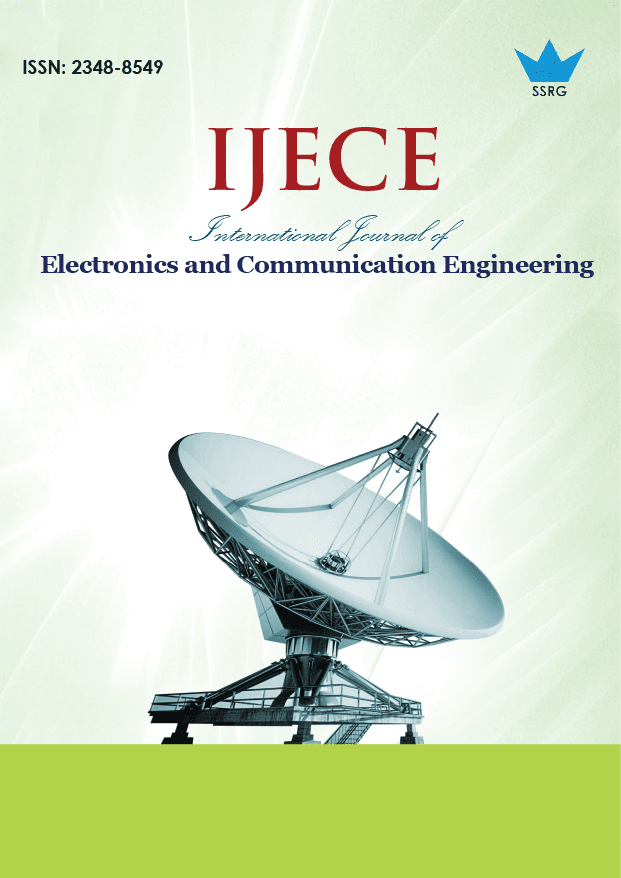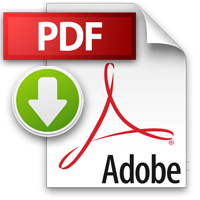ASWDR Compression Scheme Assisted PSO Based Energy Aware Routing Scheme for Internet of Things (IoT) Application in WSN Scenario

| International Journal of Electronics and Communication Engineering |
| © 2025 by SSRG - IJECE Journal |
| Volume 12 Issue 10 |
| Year of Publication : 2025 |
| Authors : Kavita Agrawal, Shish Ahmad |
How to Cite?
Kavita Agrawal, Shish Ahmad, "ASWDR Compression Scheme Assisted PSO Based Energy Aware Routing Scheme for Internet of Things (IoT) Application in WSN Scenario," SSRG International Journal of Electronics and Communication Engineering, vol. 12, no. 10, pp. 39-49, 2025. Crossref, https://doi.org/10.14445/23488549/IJECE-V12I10P105
Abstract:
Modern high-speed communication devices require efficient network architecture with energy usage constraints. This requirement introduced the application of IoT, which represents a new milestone in the prevalent global use of advanced devices. This article proposes a novel routing protocol by using a simulation environment for a homogeneous Wireless Sensor Network (WSN), applying the optimization algorithm with data compression at cluster heads during the data aggregation phase to assist the cluster head allocation process. An optimized mechanism for selecting cluster heads is employed on the current best solutions and the global best solution to perform transmission of sensor data. A new energy-efficient routing technique has been presented to increase the operating lifetime of sensor node-based IoT networks. The suggested protocol shows a remarkable reduction in the sensor nodes' average energy consumption when compared to conventional techniques, which ultimately results in a longer network lifetime. In particular, the proposed approach provides a 60% improvement over conventional protocols such as LEACH or PEGASIS in terms of the time taken at the round associated with the first node being discharged (dead) metric and a 20% increase over the optimized DEEC WSN routing protocol in terms of energy efficiency.
Keywords:
IoT, WSN, Clustering, PSO, Data compression, Wavelet Transform.
References:
[1] Sandip K. Chaurasiya, Arindam Biswas, and Rajib Banerjee, “An Energy-Efficient Clustering with Mobile Sink and Rendezvous Nodes for Data Collection in IoT-based Wireless Sensor Networks,” International Interdisciplinary Conference on Mathematics, Engineering and Science (MESIICON), Durgapur, India, pp. 1-5, 2022.
[CrossRef] [Google Scholar] [Publisher Link]
[2] Wafa'a Kassab, and Khalid A. Darabkh, “A-Z Survey of Internet of Things: Architectures, Protocols, Applications, Recent Advances, Future Directions and Recommendations,” Journal of Network and Computer Applications, vol. 163, 2020.
[CrossRef] [Google Scholar] [Publisher Link]
[3] Leila Abbad et al., “Location-Based Markov Clustering Routing Protocol versus Density-Based Clustering Routing Protocol for Wireless Sensor Networks,” International Symposium on iNnovative Informatics of Biskra (ISNIB), Biskra, Algeria, pp. 1-6, 2022.
[CrossRef] [Google Scholar] [Publisher Link]
[4] Sandip K. Chaurasiya et al., “An Energy-Efficient Hybrid Clustering Technique (EEHCT) for IoT-Based Multilevel Heterogeneous Wireless Sensor Networks,” IEEE Access, vol. 11, pp. 25941-25958, 2023.
[CrossRef] [Google Scholar] [Publisher Link]
[5] Rachit Manchanda, and Shonak Bansal, “A Review on WSN Clustering Algorithms in IoT Based Applications,” 2023 International Conference on Computational Intelligence and Sustainable Engineering Solutions (CISES), Greater Noida, India, pp. 757-762, 2023.
[CrossRef] [Google Scholar] [Publisher Link]
[6] Anshu Srivastava, and Anurag Banoudha, “Techniques of Visualization of Web Navigation System,” International Journal of Research Development and Application in Science and Engineering, vol. 6, no. 1, pp. 1-4, 2014.
[Google Scholar] [Publisher Link]
[7] Vrince Vimal et al., “Clustering Isolated Nodes to Enhance Network’s Lifetime of WSNs for IoT Applications,” IEEE Systems Journal, vol. 15, no. 4, pp. 5654-5663, 2021.
[CrossRef] [Google Scholar] [Publisher Link]
[8] Vansh Wason, Rajeev Kumar, and Prashant Johri, “Smart Sensors Network Using IoT Technologies,” 2021 International Conference on Advance Computing and Innovative Technologies in Engineering (ICACITE), Greater Noida, India, pp. 65-68, 2021.
[CrossRef] [Google Scholar] [Publisher Link]
[9] Xiangyuan Yin, Liping Guan, and Daogen Jiang, “A Survey on LEACH-Based Clustering Routing Protocols in Wireless Sensor Networks,” 2022 International Conference on Education, Network and Information Technology (ICENIT), Liverpool, United Kingdom, pp. 323-325, 2022.
[CrossRef] [Google Scholar] [Publisher Link]
[10] Jaya Mishra et al., “Performance Evaluation of Cluster-Based Routing Protocol Used in Wireless Internet-of-Things Sensor Networks,” 2021 International Conference on Advances in Electrical, Computing, Communication and Sustainable Technologies (ICAECT), Bhilai, India, pp. 1-10, 2021.
[CrossRef] [Google Scholar] [Publisher Link]
[11] Dick Mugerwa et al., “Enhanced Hybrid Energy-Efficient Distributed Clustering Protocol for IoT-Based WSNs with Multiple Sinks,” 2023 IEEE Sensors Applications Symposium (SAS), Ottawa, ON, Canada, pp. 1-6, 2023.
[CrossRef] [Google Scholar] [Publisher Link]
[12] C.C. Sobin, “A Survey on Architecture, Protocols and Challenges in IoT,” Wireless Personal Communications, vol. 112, pp. 1383-1429, 2020.
[CrossRef] [Google Scholar] [Publisher Link]
[13] Kinza Shafique et al., “Internet of Things (IoT) for Next-Generation Smart Systems: A Review of Current Challenges, Future Trends and Prospects for Emerging 5G-IoT Scenarios,” IEEE Access, vol. 8, pp. 23022-23040, 2020.
[CrossRef] [Google Scholar] [Publisher Link]
[14] Himanshi Babbar, and Shalli Rani, “Software-Defined Networking Framework Securing Internet of Things,” Integration of WSN and IoT for Smart Cities, pp. 1-14, 2020.
[CrossRef] [Google Scholar] [Publisher Link]
[15] Ravi Sharma, Shiva Prakash, and Pankaj Roy, “Methodology, Applications, and Challenges of WSN-IoT,” 2020 International Conference on Electrical and Electronics Engineering (ICE3), Gorakhpur, India, pp. 502-507, 2020.
[CrossRef] [Google Scholar] [Publisher Link]
[16] Amin Shahraki et al., “A Survey and Future Directions on Clustering: From WSNs to IoT and Modern Networking Paradigms,” IEEE Transactions on Network and Service Management, vol. 18, no. 2, pp. 2242-2274, 2021.
[CrossRef] [Google Scholar] [Publisher Link]
[17] Khalid A. Darabkh, Wafa'a K. Kassab, and Ala’ F. Khalifeh, “LiM-AHP-G-C: Lifetime Maximizing Based on Analytical Hierarchical Process and Genetic Clustering Protocol for the Internet of Things Environment,” Computer Networks, vol. 176, 2020.
[CrossRef] [Google Scholar] [Publisher Link]
[18] Khalid A. Darabkh, Mohammad Z. El-Yabroudi, and Ali H. El-Mousa, “BPA-CRP: A Balanced Power-Aware Clustering and Routing Protocol for Wireless Sensor Networks,” Ad Hoc Networks, vol. 82, pp. 155-171, 2019.
[CrossRef] [Google Scholar] [Publisher Link]
[19] Khalid A. Darabkh et al., “IEDBCHS-BOF: Improved Energy and Distance Based CH Selection with Balanced Objective Function for Wireless Sensor Networks,” 2020 Fifth International Conference on Fog and Mobile Edge Computing (FMEC), Paris, France, pp. 275-279, 2020.
[CrossRef] [Google Scholar] [Publisher Link]
[20] Khalid A. Darabkh et al., “Impairments-Aware Time Slot Allocation Model for Energy-Constrained Multi-Hop Clustered IoT Nodes Considering TDMA and DSSS MAC Protocols,” Journal of Industrial Information Integration, vol. 25, 2022.
[CrossRef] [Google Scholar] [Publisher Link]
[21] Craig Thomson et al., “Towards an Energy Balancing Solution for Wireless Sensor Network with Mobile Sink Node,” Computer Communications, vol. 170, pp. 50-64, 2021.
[CrossRef] [Google Scholar] [Publisher Link]
[22] J. Amutha, Sandeep Sharma, and Sanjay Kumar Sharma, “An Energy Efficient Cluster-Based Hybrid Optimization Algorithm with Static Sink and Mobile Sink Node for Wireless Sensor Networks,” Expert Systems with Applications, vol. 203, 2022.
[CrossRef] [Google Scholar] [Publisher Link]
[23] S. Sahay, Anurag Banoudha, and Raghawendra Sharma, “Comparative Study of Soft Computing Techniques for Ground Water Level Forecasting in a Hard Rock Area,” International Journal of Research Development and Application in Science and Engineering, vol. 4, no. 1, pp. 1-6, 2013.
[Google Scholar] [Publisher Link]
[24] Rahul Kumar Verma, and Shubhra Jain, “Energy and Delay Efficient Data Acquisition in Wireless Sensor Networks by Selecting Optimal Visiting Points for Mobile Sink,” Journal of Ambient Intelligence and Humanized Computing, vol. 14, pp. 11671-11684, 2023.
[CrossRef] [Google Scholar] [Publisher Link]
[25] Khalid A. Darabkh et al., “Mobile Sink Optimization for Enhancing Data Delivery in Wireless Sensor Networks,” 2020 IEEE International IOT, Electronics and Mechatronics Conference (IEMTRONICS), Vancouver, BC, Canada, pp. 1-4, 2020.
[CrossRef] [Google Scholar] [Publisher Link]
[26] Chaya Shivalinge Gowda, and P.V.Y. Jayasree, “Rendezvous Points Based Energy Aware Routing Using Hybrid Neural Network for Mobile Sink in Wireless Sensor Networks,” Wireless Networks, vol. 27, pp. 2961-2976, 2021.
[CrossRef] [Google Scholar] [Publisher Link]
[27] Maryam Naghibi, and Hamid Barati, “EGRPM: Energy Efficient Geographic Routing Protocol Based on Mobile Sink in Wireless Sensor Networks,” Sustainable Computing: Informatics and Systems, vol. 25, 2020.
[CrossRef] [Google Scholar] [Publisher Link]
[28] Suraj Sharma et al., “Rendezvous Based Routing Protocol for Wireless Sensor Networks with Mobile Sink,” The Journal of Supercomputing, vol. 73, pp. 1168-1188, 2017.
[CrossRef] [Google Scholar] [Publisher Link]
[29] Doaa Sami Khafaga et al., “Compression of Bio-Signals Using Block-Based Haar Wavelet Transform and COVIDOA for IoMT Systems,” Bioengineering, vol. 10, no. 4, pp. 1-14, 2023.
[CrossRef] [Google Scholar] [Publisher Link]
[30] Ahmed Bencherqui et al., “Optimal Reconstruction and Compression of Signals and Images by Hahn Moments and Artificial Bee Colony (ABC) Algorithm,” Multimedia Tools and Applications, vol. 81, pp. 29753-29783, 2022.
[CrossRef] [Google Scholar] [Publisher Link]
[31] Khalid M. Hosny, Asmaa M. Khalid, and Ehab R. Mohamed, “Efficient Compression of Bio-Signals by Using Tchebichef Moments and Artificial Bee Colony,” Biocybernetics and Biomedical Engineering, vol. 38, no. 2, pp. 385-398, 2018.
[CrossRef] [Google Scholar] [Publisher Link]
[32] Reem Riyad Elyyan, and Khalid A. Darabkh, “A New IoT Power-Limited Wireless Sensor Networks Routing Protocol Utilizing Computational Intelligence,” 2023 6th International Conference on Advanced Communication Technologies and Networking (CommNet), Rabat, Morocco, pp. 1-7, 2023.
[CrossRef] [Google Scholar] [Publisher Link]
[33] Russell C. Eberhart, and James Kennedy, Swarm Intelligence, Elsevier, pp. 1-541, 2001.
[Google Scholar] [Publisher Link]

 10.14445/23488549/IJECE-V12I10P105
10.14445/23488549/IJECE-V12I10P105